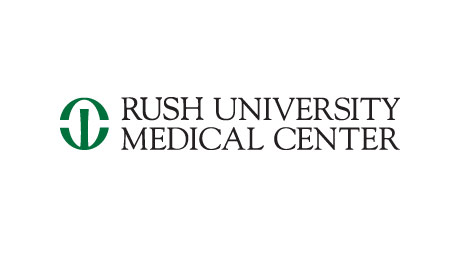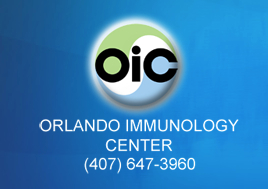An Efficacy, Safety, and Pharmacokinetics Study of JNJ-56136379 in Participants With Chronic Hepatitis B Virus Infection
| Status: | Recruiting |
|---|---|
| Conditions: | Infectious Disease, Hepatitis, Hepatitis |
| Therapuetic Areas: | Immunology / Infectious Diseases |
| Healthy: | No |
| Age Range: | 18 - 70 |
| Updated: | 3/24/2019 |
| Start Date: | February 13, 2018 |
| End Date: | March 31, 2021 |
| Contact: | Study Contact |
| Email: | JNJ.CT@sylogent.com |
| Phone: | 844-434-4210 |
A Phase 2a, Randomized, Partially-blind, Placebo-controlled Study to Assess the Efficacy, Safety, and Pharmacokinetics of Treatment With Multiple Doses of JNJ-56136379 as Monotherapy and in Combination With a Nucleos(t)Ide Analog in Subjects With Chronic Hepatitis B Virus Infection
The main purpose of this study is to evaluate efficacy of 24 weeks of study treatment, in
terms of changes in hepatitis B surface antigen (HBsAg) levels.
terms of changes in hepatitis B surface antigen (HBsAg) levels.
The main study consists of 2-parts and each part will consist of 2 types of Chronic Hepatitis
B-infected participant populations. Each part of the study will consist of screening phase
(up to 8 weeks), treatment phase (24 weeks or 48 weeks, depending on treatment response), and
post-treatment follow-up phase (24 weeks or 48 weeks, depending on treatment response). The
duration of individual participation will be up to approximately 56 weeks (participants not
eligible to continue treatment in extension phase), up to 80 weeks (participants continuing
treatment in extension phase but not meeting treatment completion criteria), or up to 104
weeks (participants meeting treatment completion criteria). The safety and efficacy will be
monitored throughout the study. In a separate substudy, at selected clinical sites,
percutaneous core liver biopsy will be performed to evaluate changes of intrahepatic viral
parameters.
B-infected participant populations. Each part of the study will consist of screening phase
(up to 8 weeks), treatment phase (24 weeks or 48 weeks, depending on treatment response), and
post-treatment follow-up phase (24 weeks or 48 weeks, depending on treatment response). The
duration of individual participation will be up to approximately 56 weeks (participants not
eligible to continue treatment in extension phase), up to 80 weeks (participants continuing
treatment in extension phase but not meeting treatment completion criteria), or up to 104
weeks (participants meeting treatment completion criteria). The safety and efficacy will be
monitored throughout the study. In a separate substudy, at selected clinical sites,
percutaneous core liver biopsy will be performed to evaluate changes of intrahepatic viral
parameters.
Inclusion Criteria:
- Participants must have a body mass index (weight in kilogram (kg) divided by the
square of height in meters) of 18.0 to 35.0 kilogram / square meter (kg/m^2), extremes
included
- Participants must have chronic hepatitis B virus infection (CHB) infection documented
by: Serum hepatitis B surface antigen (HBsAg)-positive at screening and serum HBsAg-
or hepatitis B virus (HBV) deoxyribonucleic acid (DNA)-positive at least 6 months
prior to screening; Serum immunoglobulin M (IgM) anti- hepatitis B core-related (HBc)
antibody negative at screening
- In participants currently not being treated (Treatment Arms 1-2-3 and 6-7-8):
Participants must not be receiving any CHB treatment at screening, that is, Have never
received treatment with HBV antiviral medicines, including NAs or interferon (IFN)
products, OR Have not been on treatment with HBV antiviral medicines, including
nucleos(t)ide analog (NA)s or IFN products within 6 months prior to baseline (first
intake of study drugs), and participants must be HBeAg-positive and have HBV DNA
greater than or equal to (>=) 20,000 International Units Per Milliliter (IU/mL), OR be
hepatitis B e antigen (HBeAg)-negative and have HBV DNA >=2,000 IU /mL at screening,
and participants must have HBsAg greater than (>) 250 IU/mL at screening, and
participants must have alanine aminotransferase (ALT) > upper limit of normal (ULN)
and less than or equal to (<=) 5 * ULN at screening, determined in the central
laboratory
- In virologically suppressed participants (Treatment Arms 4-5 and 9-10): Participants
must be virologically suppressed by current NA treatment (entecavir (ETV) or tenofovir
disoproxil fumarate (TDF)) as defined by HBV DNA less than (<) 60 IU/mL at screening
and at least 6 months prior to screening, and participants must be on the same NA
treatment (ETV or TDF) and the same dose for >=12 months prior to screening, and
participants must have HBsAg > 250 IU/mL at screening, and participants must have ALT
<=2*ULN at screening
- Participants must have: A liver biopsy result classified as Metavir F0-F2 within 1
year prior to screening or at the time of screening, OR FibroScan liver stiffness
measurement <8.0 kilopascal (kPa) within 6 months prior to screening or at the time of
screening
Exclusion Criteria:
Main Study:
- Participants who test positive for anti-hepatitis B surface (HBs) antibodies
- Participants with current hepatitis A virus infection (confirmed by hepatitis A
antibody immunoglobulin M [IgM]), hepatitis D virus (HDV) infection (confirmed by HDV
antibody), hepatitis E virus infection (confirmed by hepatitis E antibody IgM), or
human immunodeficiency virus (HIV)-1 or HIV-2 infection (confirmed by antibodies) at
screening; participants with a history of or current HCV infection (confirmed by HCV
antibody). Evidence of other active infection (bacterial, viral, fungal, including
acute tuberculosis) deemed clinically relevant by the investigator that would
interfere with study conduct or its interpretation will also lead to exclusion
- Participants with any evidence of hepatic decompensation at any time point prior to or
at the time of screening: Direct bilirubin >1.2* ULN, or International normalized
ratio (INR) >1.5* ULN, or Serum albumin < lower limit of normal (LLN), or documented
history or current evidence of variceal bleeding, ascites, or hepatic encephalopathy
- Participants with a history of cardiac arrhythmia (example, extrasystoli, tachycardia
at rest), history of risk factors for Torsades de Pointes syndrome (example,
hypokalemia, family history of long QT syndrome) or history or other clinical evidence
of significant or unstable cardiac disease (example, angina, congestive heart failure,
myocardial infarction, diastolic dysfunction, significant arrhythmia, coronary heart
disease, and/or clinically significant 12 lead electrocardiograms (ECGs)
abnormalities), moderate to severe valvular disease, or uncontrolled hypertension at
screening
- Participants with contraindications to the use of ETV or TDF per local prescribing
information
Substudy:
- Presence of coagulopathy or hemoglobinopathy (including sickle cell disease,
thalassemia)
- Use of any anti-coagulant, anti-platelet, or non-steroidal anti-inflammatory drug
medications from 10 days before until 5 days after each liver biopsy
- Presence of ascites, focal liver lesions, and other findings that would be
contraindications for liver biopsies
We found this trial at
10
sites
267 Lange Beeldekensstraat
Antwerpen, 2060
Antwerpen, 2060
Click here to add this to my saved trials
Click here to add this to my saved trials
Click here to add this to my saved trials
Rush University Medical Center Rush University Medical Center encompasses a 664-bed hospital serving adults and...
Click here to add this to my saved trials
Click here to add this to my saved trials
Scripps Clinic Scripps Clinic in Torrey Pines has been providing exceptional medical care to people...
Click here to add this to my saved trials
Click here to add this to my saved trials
Click here to add this to my saved trials
Orlando Immunology Center Orlando Immunology Center , or simply (OIC) is a part of Infectious...
Click here to add this to my saved trials
Click here to add this to my saved trials


